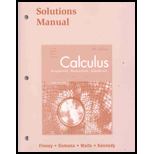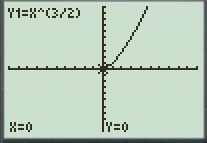
Concept explainers
(a)
To find:The domain and range of the function
(a)
Answer to Problem 18E
The domain and range of the function
Explanation of Solution
Given information:The given function is
Calculation:
Consider the given function.
Domain is the set of all input values. The given function is defined only for positive real values of
Range is the set of all output values. The function
Therefore, the domain and range of the function
(b)
To graph:The function
(b)
Explanation of Solution
Given information:The function is
Graph:
To graph a function
First press “ON” button on graphical calculator, press
The display will show the equation,
Now, press the

Figure (1)
Interpretation: The graph of the function
Chapter 1 Solutions
Calculus: Graphical, Numerical, Algebraic: Solutions Manual
Additional Math Textbook Solutions
College Algebra (7th Edition)
Intro Stats, Books a la Carte Edition (5th Edition)
Algebra and Trigonometry (6th Edition)
Calculus: Early Transcendentals (2nd Edition)
Thinking Mathematically (6th Edition)
Basic Business Statistics, Student Value Edition